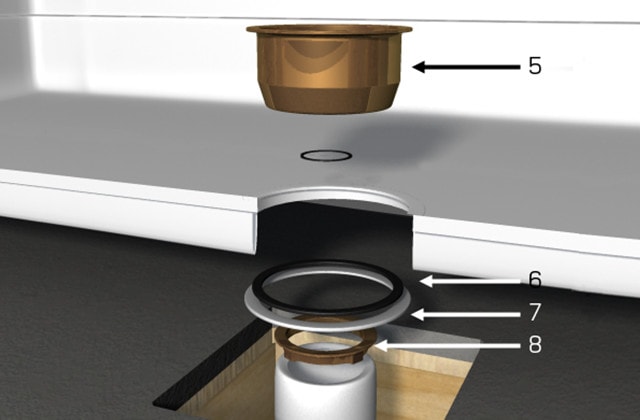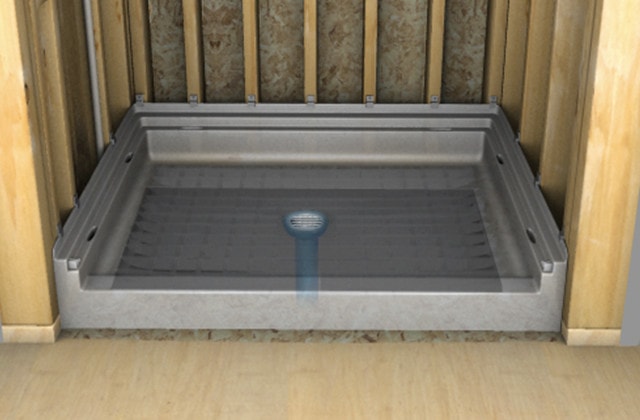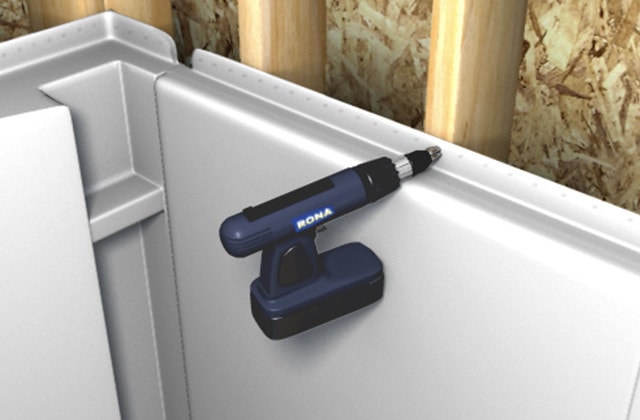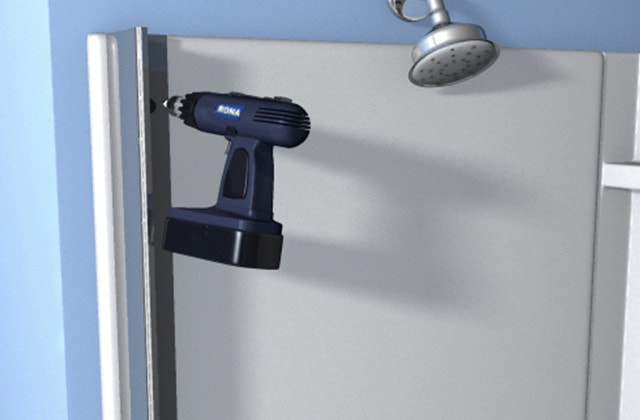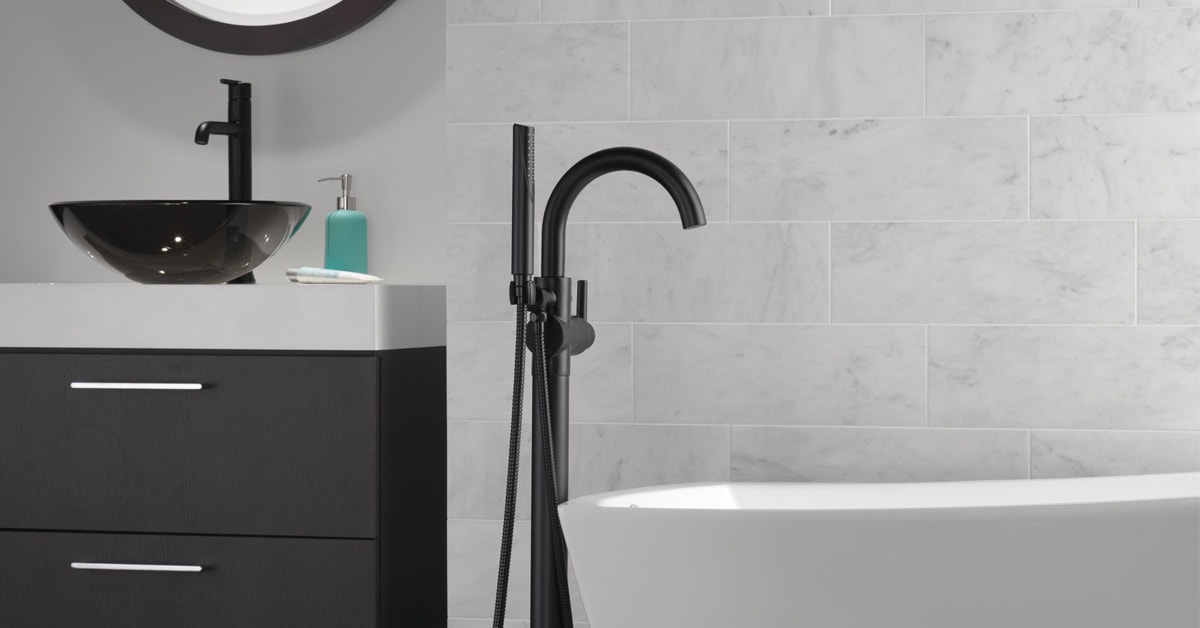Before you begin
This project details the installation of a shower base, wall panels and door. The rough plumbing must be in place prior to installation.
- For the installation of a shower base only, go to steps 1-5.
- For the installation of a pivot door, go to step 7.
- Read the project Install a bath or shower faucet for more information.
- Ensure the framing meets the manufacturer's specifications. For example, certain manufacturers require studs spaced at 12" intervals to support the shower stall instead of the standard 16" intervals.
- It is preferable to set the prefabricated shower base in cement or on a concrete slab subfloor.
- Throughout the installation, protect the interior surface of the shower base with thick cardboard or a protective cover.











